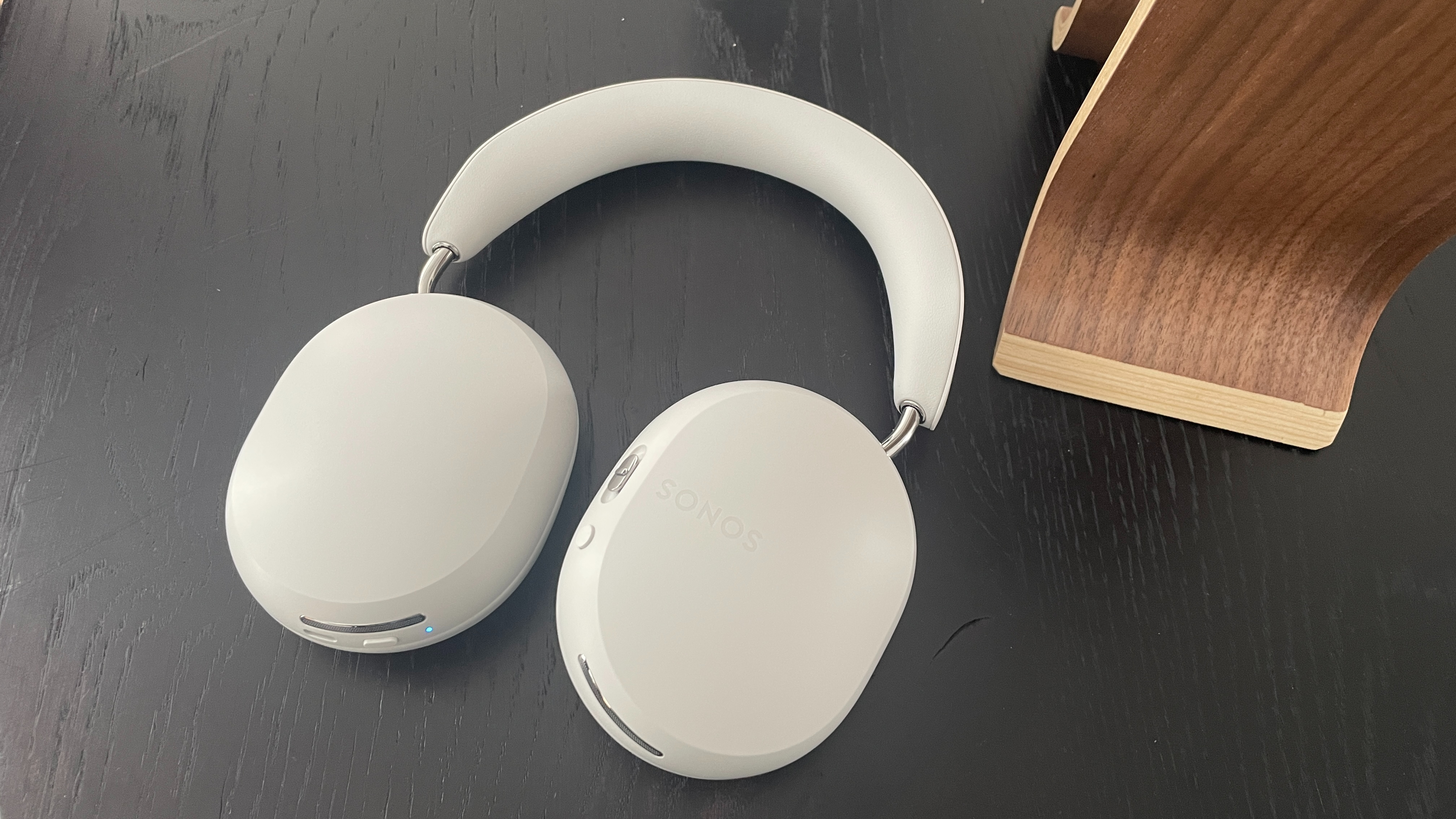
Well, look who has finally turned up. The Sonos Ace headphones that we have been anticipating for years are finally a reality. Featuring active noise-cancelling, 30-hour battery life, a sleek design in two finishes, physical control buttons (yes!) and many more features, the premium Sonos Ace wireless headphones have broken ground and have the weight of expectations behind them.
We got a brief demonstration and hands-on time with an early sample during a launch event, so let’s go straight into our first impressions and what we know about these new headphones so far.
Price
The Sonos Ace headphones will cost £449 / $449 / AU$699 when they launch globally on 5th June 2024. We expected Sonos to be gunning after the expensive Apple AirPods Max (£549 / $549 / AU$899) but this is smack bang in the middle of Sony and Bose territory too.
The Award-winning Sony WH-1000XM5 retail for £380 / $399 / AU$550, while the ANC-experts Bose QuietComfort Ultra Headphones are yours for very similar money at £450 / $429 / AU$649. Both Sony and Apple headphones have come down in price since launch, so it’s a very crowded market with serious sonic competition that Sonos has entered.
Build, design & comfort
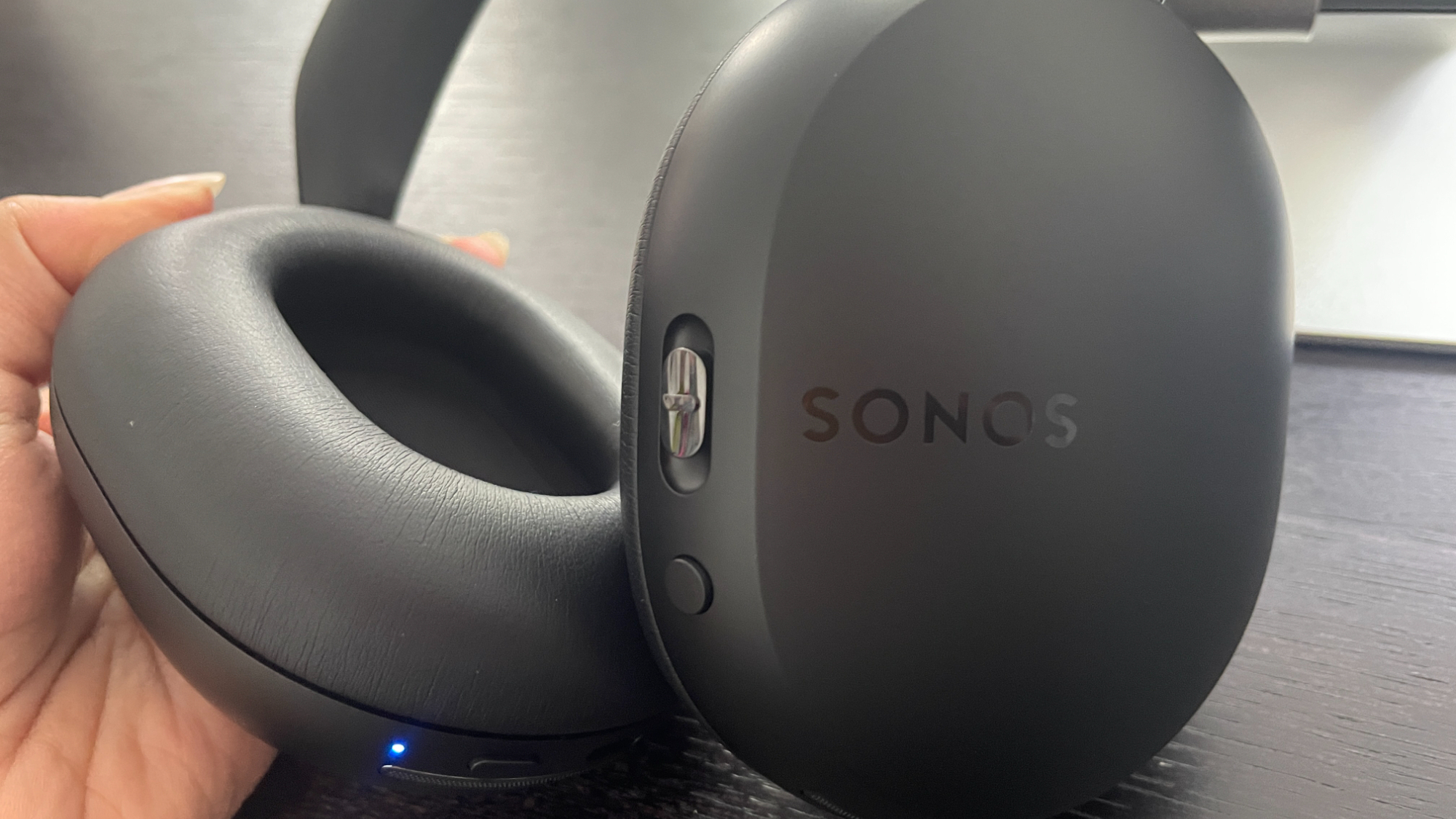
Even in our limited time with the Ace, we like the look and feel of these headphones. Sonos has a reputation for designing minimalist products that blend into the home anonymously without drawing attention to themselves (something that either suits you perfectly or you might find a tad bland), but we think the Ace are nicely made with a hint of style, while still sticking to the classic seamless look.
There are little flourishes that mark them out as premium quality, with Sonos stating it uses premium materials, paying special attention to every bit of the design and what would make a good user experience. The earcups feel smooth to the touch and are coated in an anti-fingerprint finish that we couldn’t get to tarnish when handling. The Sonos logo emblazoned across one ear cup is meant to be subtle and to shimmer only when it catches the light – but it is rather out there when it does.
The earpads use memory foam coated in a layer of vegan leather (polyurethane) that feels soft and plush. The adjustable headband uses a firmer structure of the same materials, and we found them to be comfortable in our time with the headphones. They feel fairly lightweight and seem to fit securely (and on smaller heads) with no excessive clamping pressure, and they slide along the stainless steel yokes smoothly when adjusting. However, we’ll need more time with our review sample to find out if they remain just as comfortable or overheat our ears over long periods of listening.
We like how the Ace’s earcups are more slimline than those on the Sony XM5, which can sometimes protrude too far from the head, and that they are not quite as oversized and flashy as the AirPods Max’s shiny earcups. Despite our first impression that the earcups look a little on the small side, they fit over our ears with enough room not to graze against earrings or the edges of ears.
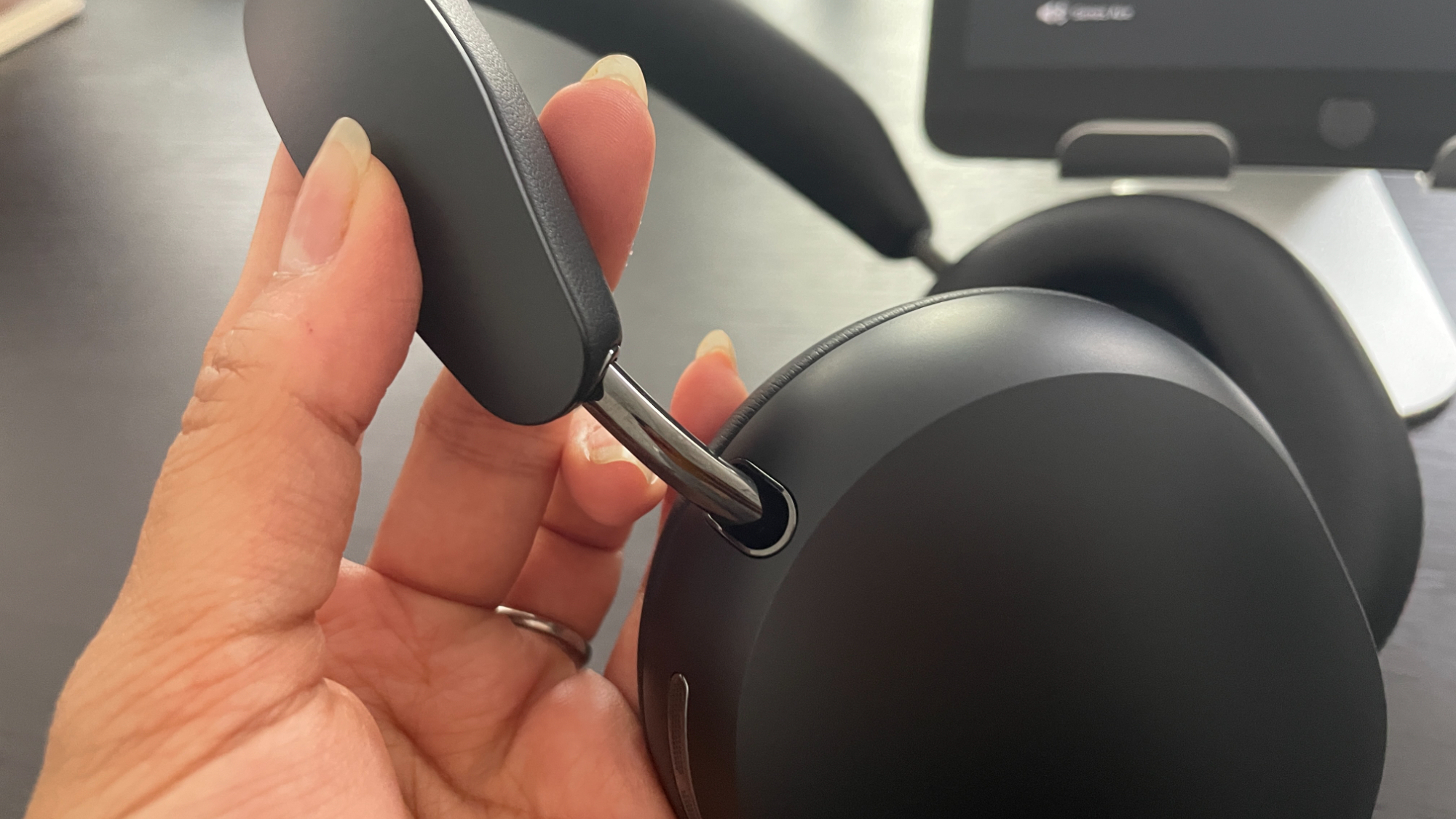
We particularly like how the hinges and joints are concealed in the body of the headphones; it offers a more elevated look and ensures your hair doesn’t get caught in those pesky edges. The earcups swivel flat but don’t fold up, while the replaceable earpads are attached to the frame by strong magnets.
One of our favourite elements of the Sonos Ace, at least from the demo, is that there are physical buttons instead of touch-capacitive controls. Sonos cites user experience and how the tactility and confirmation from using a physical button are more reassuring than a gesture/touch-based one. We tend to agree.
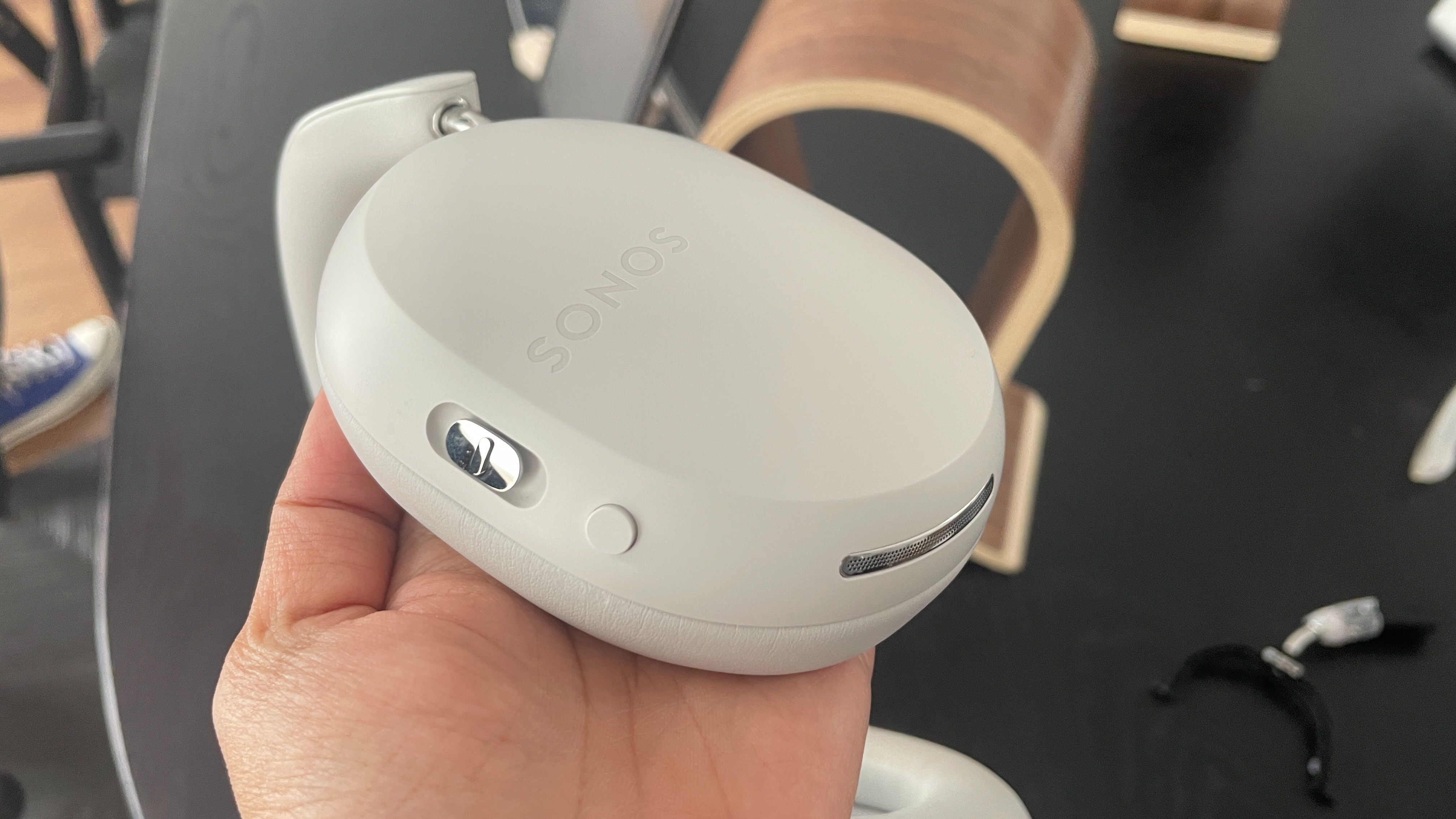
On the left earcup is a button for power and Bluetooth pairing, and the right earcup has a single button to cycle through the noise cancelling and aware modes. But it’s the multi-functional slider with a button (Sonos calls it the “elongated content key”; we will not) that is the secret star of the show. You can slide it up and down to change the volume, and the spring-loaded mechanism is lovely to use. The action is responsive, tactile and feels immediately intuitive. You can also press the button to control playback (pause, play, skip, answer calls etc) and use it to ‘swap’ audio from a connected Sonos Arc soundbar to your Ace headphones and vice versa (more on this later).
Instead of having to learn a combination of gesture controls or deal with failed swipes or taps, being able simply to press a button and know the action will stick is very appealing. We tried this out in the demo connected to an iPad playing music, and the actions all worked smoothly.

The Ace headphones come in two matte finishes – black or soft white – with the metal accents’ intensity differing slightly depending on the finish. Another nice touch is that the inner earcup mesh is of different shades to more clearly distinguish between the left and right earcups. You get a matching travel case with a smaller travel pouch within that can hold all necessary cables. We didn’t see them at the demo, but Sonos says the headphones will come with a USB-C charging cable as well as a USB-C to 3.5mm cable so that you can listen to them wired.
Overall, we came away from our initial demo with a pretty positive impression of the Sonos Ace headphones’ design and build quality.
Features
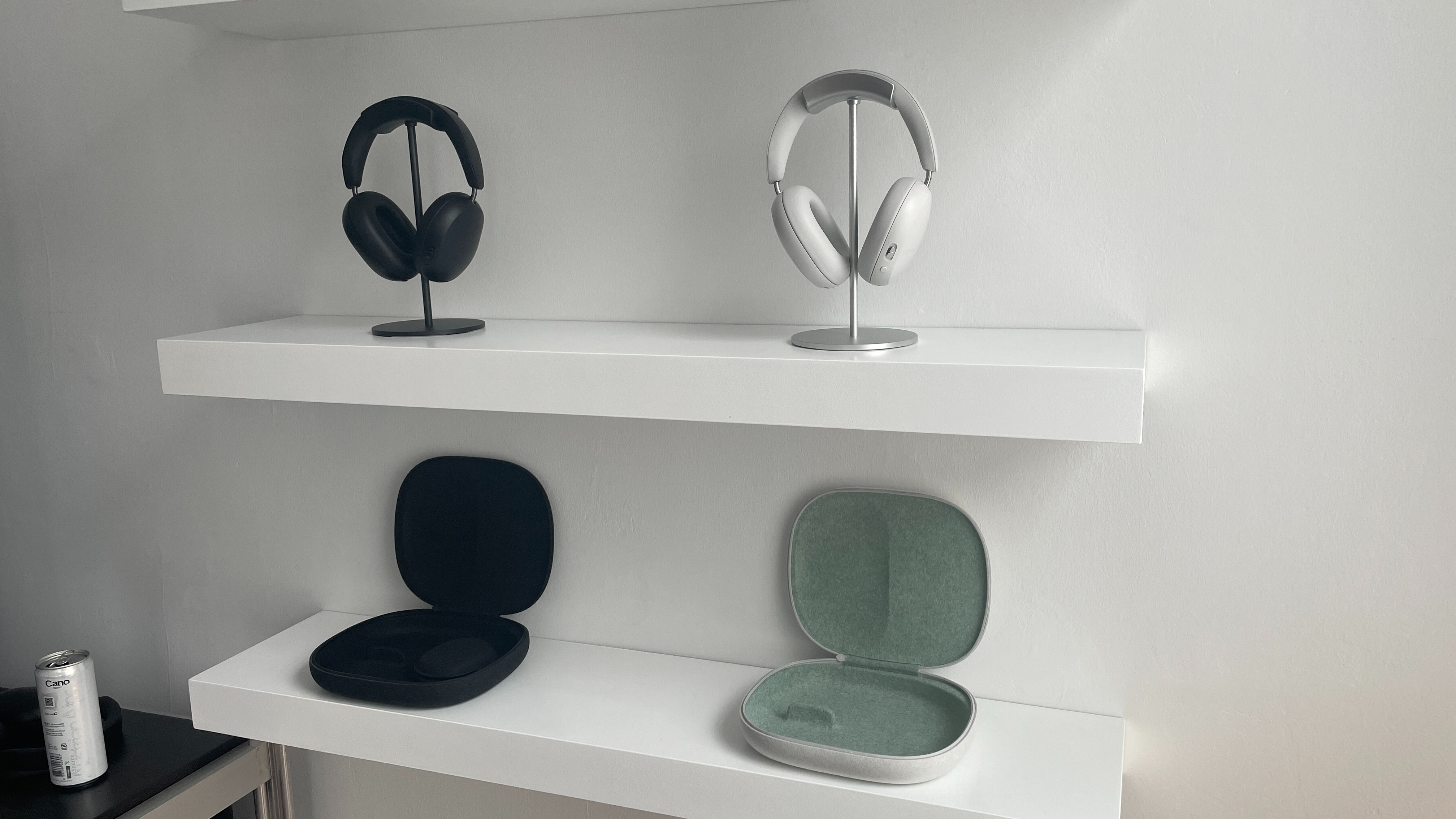
The Ace are equipped with the latest Bluetooth 5.4 version and can play lossless audio from compatible sources thanks to Snapdragon Sound’s aptX Lossless and Apple’s ALAC codecs support. We will have to try this out for ourselves during our proper testing period, as Sonos claims lossless audio works over both Bluetooth and wired listening.
The Ace don’t support next-gen codecs such as Auracast and LE Audio yet, however; Sonos says it is tracking how these codecs are developing and will adapt accordingly once they are used more widely. For now, says the Sonos team, they have designed the headphones to behave how people generally and currently use Bluetooth headphones, and furnished them with the crucial features expected of a pair of premium wireless headphones.
As such, these Sonos Ace are not wi-fi headphones as some rumours had suggested; they connect to mobile devices by Bluetooth only. That means you can’t integrate them to the wider Sonos ecosystem or to your Era 100 speaker as many have long hoped. Sonos says the team have thought hard about full wi-fi headphones, but for this “entry” headphone product, they focused on the user experience and how Bluetooth is more widely supported on mobile devices and offers seamless integration.

One crucial feature is battery life. You get 30 hours of playtime on the Sonos Ace, with Bluetooth and ANC turned on. While we don’t have figures for when those modes are turned off, we can compare numbers with the current rivals: it’s on a par with the Sony XM5 with 30 hours, but the AirPods Max lags with merely 20 hours, and Bose offers 24 hours. A fast-charge function gives you three hours of juice from just a three-minute charge.
Other features include ‘wear detection’, which automatically pauses music when you remove the headphones and resumes playing when you put them on. The headphones also support spatial audio with dynamic head tracking across music and movies with apps that support the Dolby Atmos format. Dolby Atmos and 360 Reality Audio tracks in Apple Music, Amazon Music, Tidal and Deezer are all supported, so you can get your spatial audio kicks no matter what popular streaming service you use. We listened to a clip from The Last City podcast and Praise The Lord by Breland for the spatial audio demo; our experience generally with spatial audio has been hit and miss, but we will explore with more familiar Dolby Atmos music and film tracks to hear how Sonos handles it compared with Apple.
In the Sonos app, you’ll be able to turn spatial audio on or off (and turn dynamic head tracking on/off separately too), and there are EQ settings for adjusting bass, treble and loudness.
TV Audio Swap and TrueCinema

This being Sonos, it couldn’t entirely ignore its extended family. The Sonos Ace headphones are able to connect to your Sonos-based home cinema system, with a handy ‘TV Audio Swap’ function and a new TrueCinema calibration for a bespoke, immersive Dolby Atmos experience.
The Swap feature is available at launch, which lets you beam the sound from your Sonos soundbar to the Sonos Ace headphones with one button press, and vice versa. This means you can listen to movies and TV shows privately at night without disturbing the rest of your household, or if you want to watch Succession in peace without subjecting young ones to all the swearing.
During the demo for this feature, we were shown clips from the Barbie movie and a David Attenborough nature documentary, and the swapping between the Arc and the Ace was seamless and instant. We simply had to press a button in the app or the button on the earcups (you have to hold down to swap) and there was hardly any perceptible lag when swapping audio between the two devices. Sonos claims the latency is extremely low (they didn’t quote numbers as it depends how far back from the TV screen you happen to be sitting), but we didn’t notice any audio sync issues during the swapping.
This swap feature is available only with the Sonos Arc soundbar during launch, but it will be compatible with other current Sonos soundbars – Beam Gen 2, Beam Gen 1, Ray – later on. Older products such as the Playbar won’t be supported.
A further home cinema feature is the TrueCinema calibration, which uses new software to tailor your headphones’ acoustics to your room, bringing a more spatial, immersive experience when watching Dolby Atmos (or upmixed stereo to 7.1.4 channels) soundtracks via a Sonos soundbar and TV system. There is both a default room mode and a TrueCinema calibrated mode, while a new “Sonos binaural renderer” transforms the multi-channel soundtrack into a binaural audio mix that offers a more spacious, immersive sound beyond standard stereo. The idea is to feel like you’re not wearing closed-back headphones, with the sound tailored to your room the way your Arc is calibrated to your room’s acoustics and constraints.
The headphones were already calibrated for the London demo room we were in, and we weren’t able to tweak these settings or see how the calibration works – we imagine it is still being fine-tuned – hence the rollout date later in the year, not at launch. We’re looking forward to trying this feature out for ourselves when it arrives, as well as the effectiveness of the TrueCinema effect when watching Atmos-soundtracked films with the Arc set up in our test rooms.
It’s worth noting that there is a wi-fi chip in the Ace that is used only for connecting to the Arc for these features. Sonos confirmed that the Ace’s 30-hour battery will drain faster when connected to the Arc, but assures us it should last two nights of movie-watching in a row. Switching back to using the headphones with your smartphone or portable device will revert back to the standard Bluetooth connection. Why then, does Sonos not implement this more widely – with its wireless speakers, for instance? The Sonos representatives said it was “possible, but not a functionality they are looking at now.”
Active noise-cancelling (ANC)
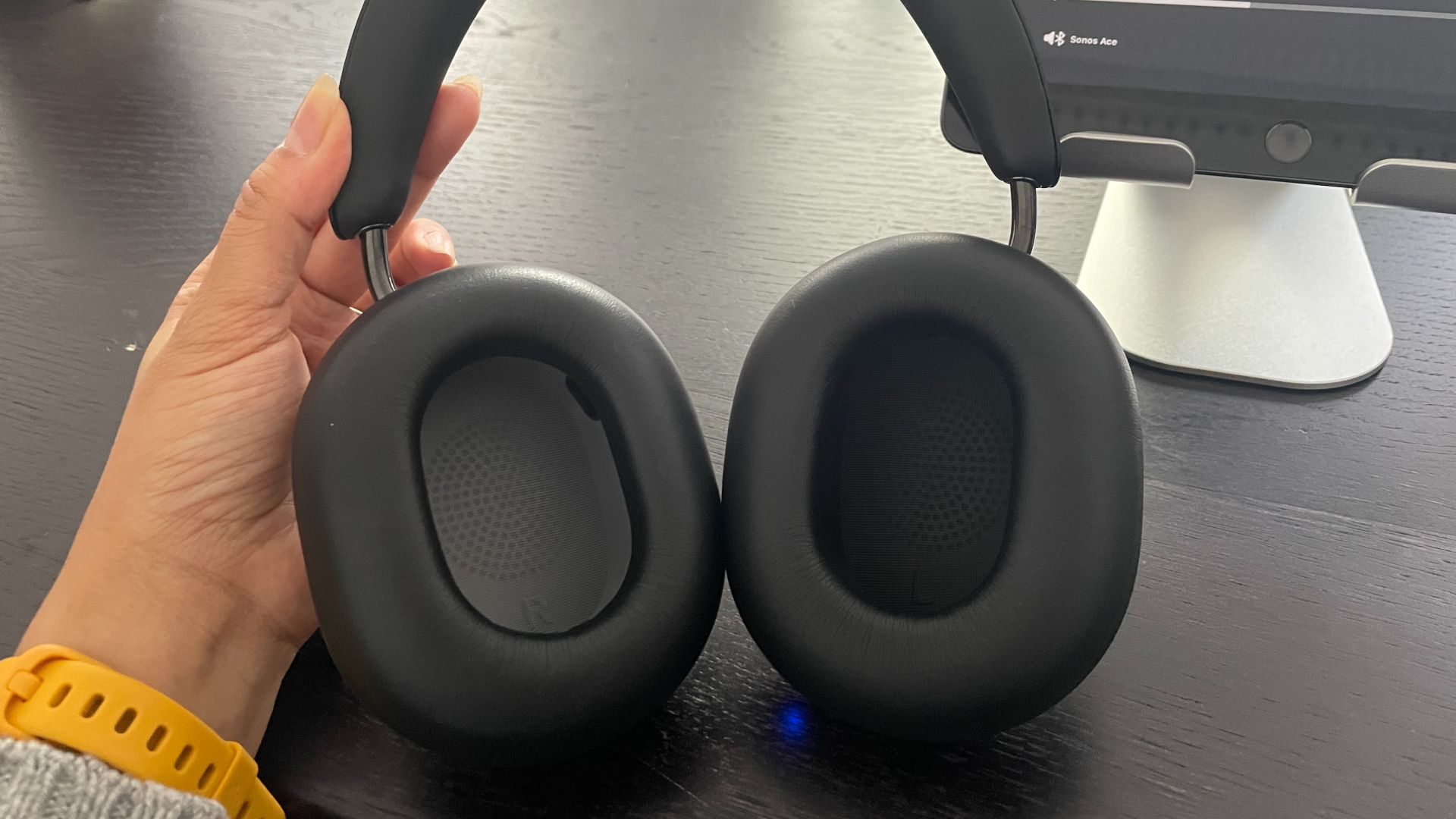
The Sonos Ace are of course an active noise-cancelling wireless pair, and you can easily toggle between full ANC and the Aware (transparency) modes using the button on the right earcup. This button only cycles between ANC and Aware, however. If you want to turn ANC completely off, you’ll have to do so in the accompanying app. We haven’t seen the finished version of the app during the demo, so can’t comment on what other features will be available, or if the ANC is adjustable or not.
Fully testing the Ace’s noise-cancelling abilities is another aspect we’ll have to road test in the real world, to see how good it is at dimming the rumbling of trains, office chatter or general traffic noise compared with the best from Bose and Sony. During our demo, we were treated to an artificial noise generator (effectively loud continuous white noise) and got to toggle between the ANC and Aware modes. The changes between the modes were obvious, but it was hardly a natural way of judging real-life conditions, where noises can be so variable in volume and intensity.
For now, we can leave you with the information that the Sonos Ace features eight mics in total – four in each cup – that are used for ANC and to deliver clear voice quality for calls.
Sound
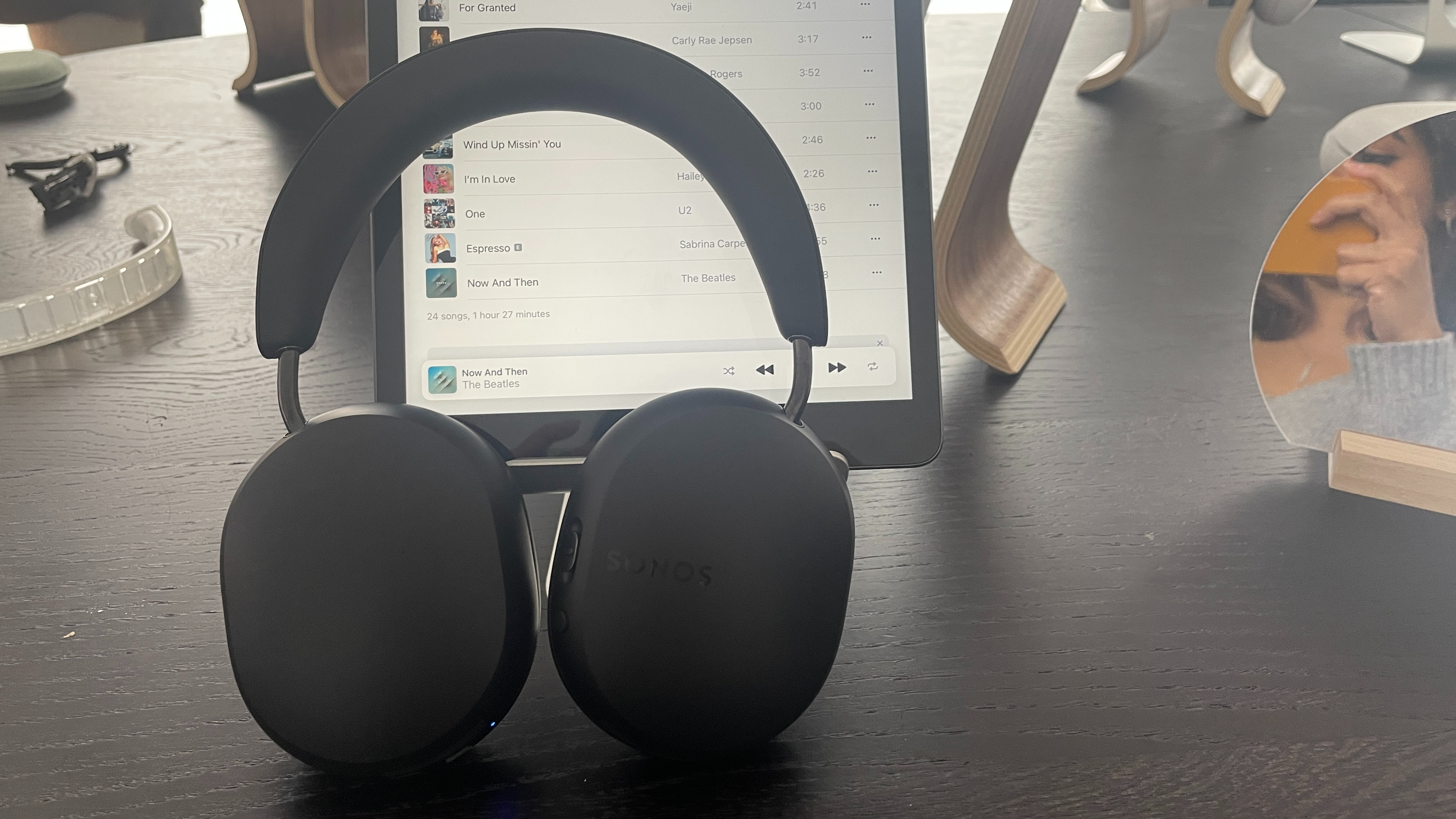
As this is only our initial impression of a product we experienced and listened to in a demo environment with no control over the sources and app, we will have to keep the sound quality section brief, as we need far more time with our review sample (and with our own playlist of test tracks) to get a proper feel for how the Sonos Ace headphones sound.
However, we can tell you that the headphones are designed with “clarity” at the forefront. Inside each earcup is a custom 40mm driver, designed to deliver a clear sound alongside a “hyper-realistic” spatial-audio experience. The headphones are tuned to deliver “crisp dialogue” when listening to podcasts and making calls, says Sonos, and it has strived to ensure human voices sound “natural and intelligible”.
These qualities were most apparent when we listened to Billie Eilish’s What Was I Made For? via Apple Music on an iPad, with her vocals and sparse arrangement showing off the clean, clear, open sound that Sonos Ace is aiming for. Her voice certainly sounded immediate and focused, and there was enough detail to pick out her intimate, breathy vocals.
Switching to a more poppy, upbeat tune gave an impression of snappy basslines while an orchestral piece seemed to revel in the headphones’ airy spaciousness. However, we couldn’t make any judgements when it came to dynamics, rhythmic prowess or true insight levels, and will need far more in-depth listening, and to compare them directly with the Apple, Sony and Bose rivals, to get a real sense of the Sonos Ace’s musical talents.
Early verdict
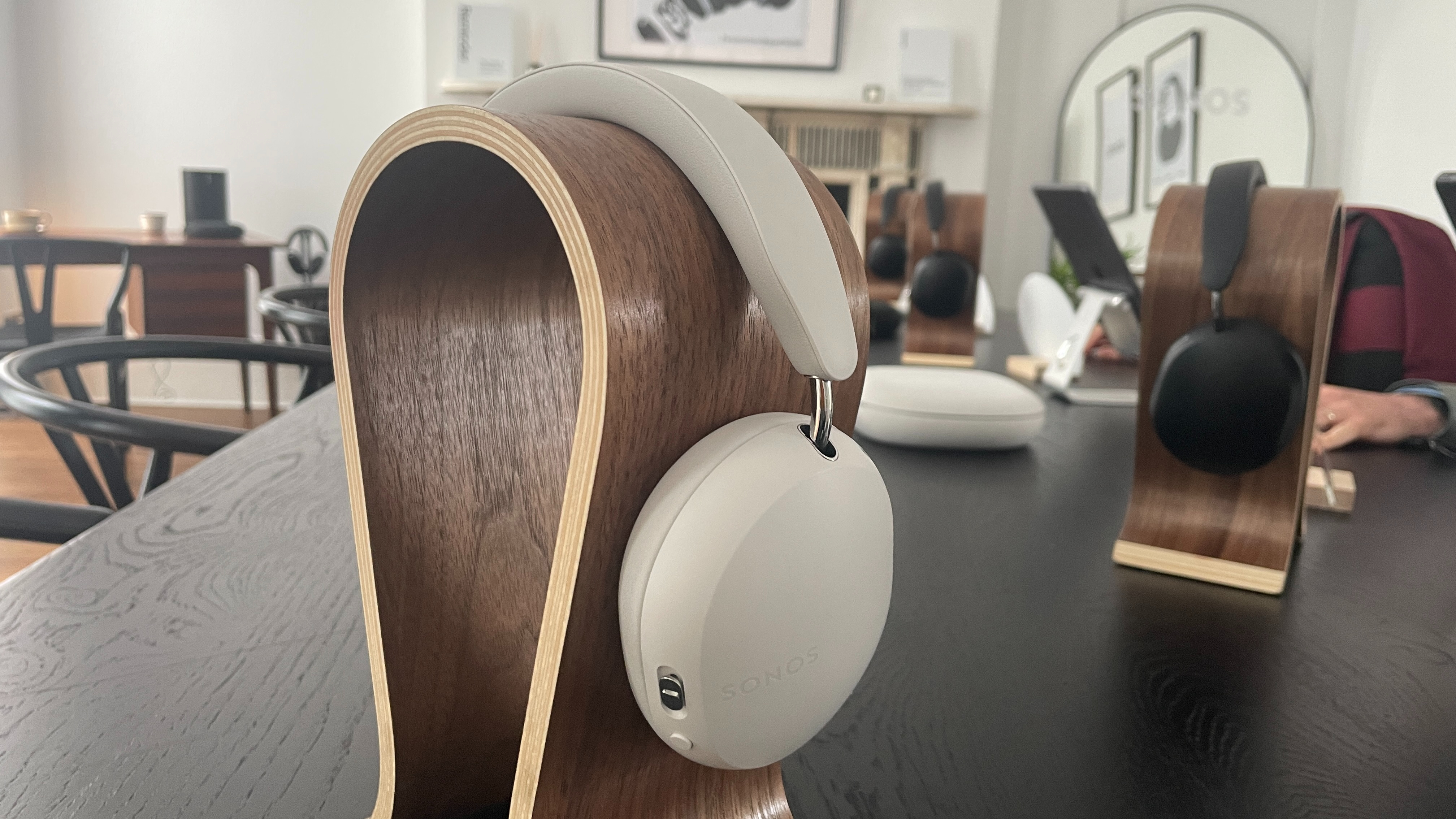
At times, it can seem that Sonos doesn’t seem to have much competition in certain categories, such as the spatial audio-focused Era 300 multi-room speaker. But wireless headphones are a different beast entirely, with strong competition and high expectations at this premium level for Sonos’s first-ever pair of headphones.
We came away from our demo with a great impression of the Ace’s design and user experience, but the sound quality is still an unknown territory. We also imagine many Sonos die-hards will be disappointed by the lack of wider integration with its ecosystem, especially with a few key features such as TrueCinema calibration missing at launch. Whether the Sonos Ace will be able to stand above the noise and take the fight to its celebrated rivals when it comes to ANC and sound is the key factor, though. Stay tuned for our full review very soon.
MORE:
Sonos Ace wireless headphones: release date news, rumours and leaked images
The best wireless headphones we recommend across all budgets
Read our Apple AirPods Max review







